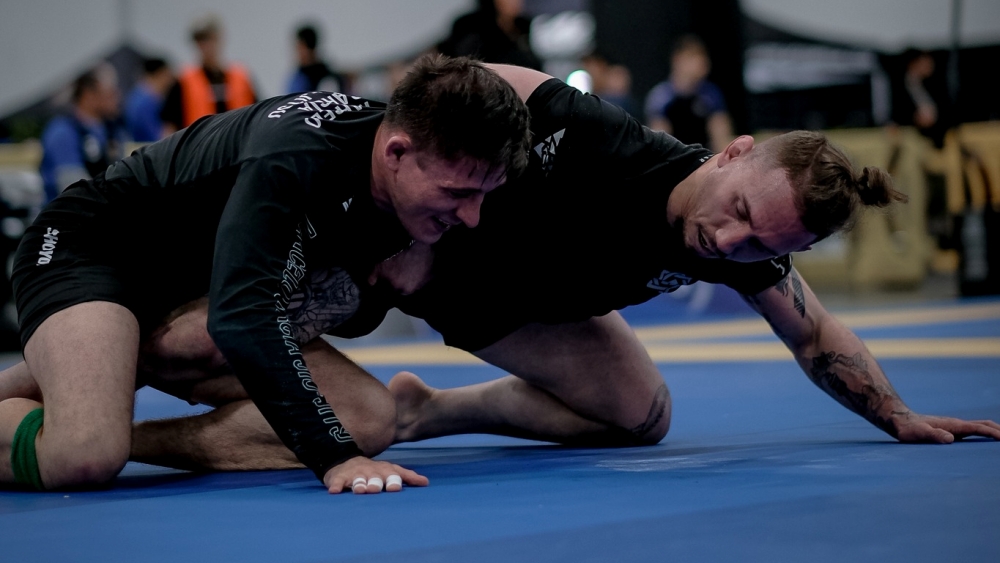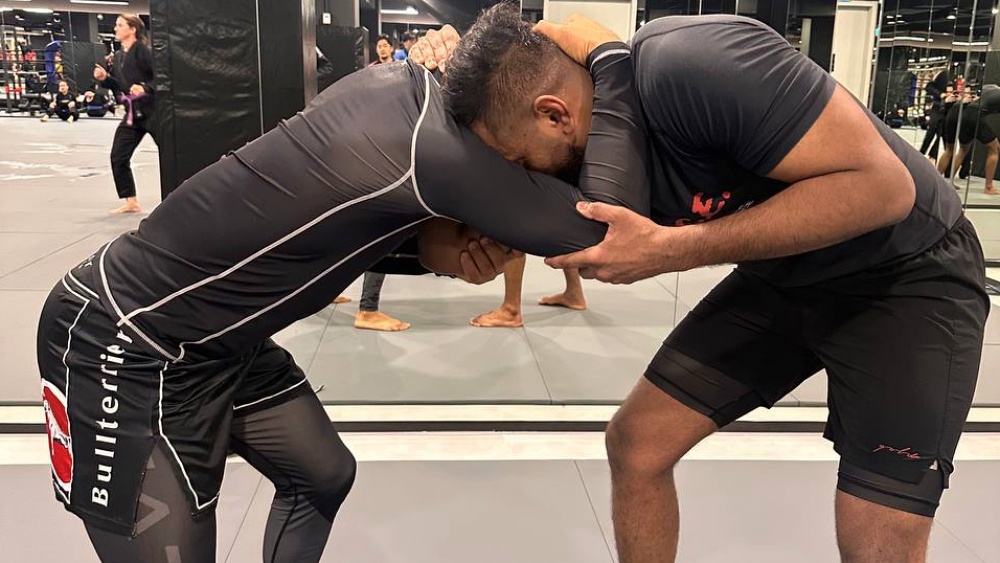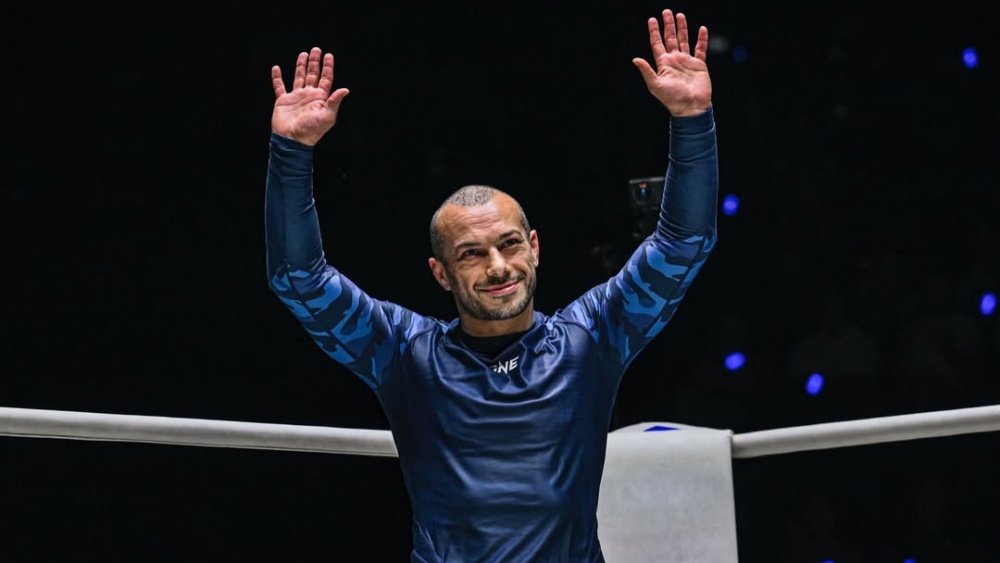Brazilian Jiu-Jitsu is a grappling martial art that takes pride in submitting opponents using various chokeholds and joint locks. Submissions can be applied either while standing or on the ground. Both are good options, but the latter is more preferred for safety reasons. This is why pins are an integral ingredient of BJJ. As the great John Danaher said, Jiu-Jitsu is the art and science of control that leads to submission.
In BJJ, there are different ways to choke an opponent. Chokes can be done with the use of the lapel. An example of this is the bow and arrow choke. There are also numerous no-gi chokes available and can be applied in both gi and no-gi situations. The entries of these chokes vary depending on the technique.
Today we will talk about a unique submission from the front headlock and turtle positions. This is a great technique that has proven its worth in submission grappling and MMA. This is the D’Arce choke.
What Is The D’Arce Choke?
The D’arce, also known as the no-gi brabo choke, is a variation of the arm triangle choke where you use both arms to wrap around the opponent’s neck, with one of their arms trapped inside. Similar to the arm triangle choke, the finishing mechanics of the D’Arce choke is to push the opponent’s arm to their neck as you squeeze to cut the blood flow. The D’Arce is very similar to an anaconda choke, but the entry is on the opposite side. You lock the choke beside the opponent’s neck as you lay them on their side while bending the neck down to tighten the pressure.
This choke was named after Joe D’Arce, an American grappler known for using the choke in competitions. Joe D’Arce may bear the name of the choke, but many clues suggest that the choke may have originated in Germany, from a luta livre competitor named Björn Dag Lagerström.
Joe was a representative of the Renzo Gracie Academy in New York, where he learned the technique from John Danaher. Joe caught the attention of a respected grappling coach from the west coast named Marc Laimon. Marc was one of the first who started using the name D’Arce choke, primarily due to Joe D’arce’s success with the technique in many tournaments.
The D’Arce and anaconda chokes are often confused because of their similarities. The difference between the two is the positioning of the lock. In the D’Arce choke, your arms are locked beside the opponent’s neck, whereas in an anaconda choke, the arms are locked outside beside the opponent’s shoulder. The same technique exists in the gi called the brabo choke, invented by BJJ black belt Milton Vieira, a master of the head and arm choke. There is a slight difference, though, in that you instead use the opponent’s lapel to finish the choke.
How To Perform The D’Arce Choke
The D’Arce is a nasty submission that can be set up from different positions. The common setup is from the turtle position. You can also apply the D’Arce from inferior positions, like when escaping from bottom side control. A common scenario for the D’Arce is when an opponent is forced to turtle after a failed takedown attempt. Another familiar situation is after you secure a snap down. Remember that you can go to the choke once you lower their head near the mat.
As mentioned above, a common way grapplers use the D’Arce is after sprawling from a takedown and the opponent turtles. Sean Bollinger, a black belt from 10th Planet Jiu-Jitsu, shows the D’Arce choke after a sprawl. Most of the time, a well-timed sprawl leaves the opponent vulnerable as it forces them to the turtle position. After a successful sprawl, control the opponent with a front headlock and walk to the side.
Dropping your chest to the opponent’s back as you control them with a front headlock will make it easier for you to move to the side with your legs up. Shoot your hip through and apply the choke from the side by putting one arm across the opponent’s shoulder and neck. Secure the lock with your opposite arm’s bicep beside the opponent’s neck as you reach for the back, forcing them to lie on their side.
Remember to not lay your back flat on the ground when locking the choke. Stay on your shoulder as you lay to the side to trap the opponent’s head and arm against your stomach to effectively disrupt their blood flow.
Jerome Maitland from the Australian Elite Team demonstrates the D’Arce choke done in transition. From bottom side control, create a frame by putting your far arm to the opponent’s hip as you grab their back. Use your near hand and apply an overhook to the opponent’s far hand while you grab your chest. Framing the opponent’s hip and overhooking the far hand will allow you to create space and control their movements.
Use the frame and overhook to move your body to the side facing the opponent instead of being flattened. Move your far arm under the opponent’s body to their opposite hip and spin through the north-south position. Control the opponent’s neck so they can’t posture up. Switch your hand from your chest to beside the opponent’s neck and lock with your other arm’s bicep as you walk to tighten the D’Arce as you finish.
Conclusion
It is always beneficial to use your physical attributes when training martial arts. Attributes such as speed, strength, length, and weight can build a crushing game. You need to leverage these attributes to further improve your BJJ as best as you can.
The effectiveness of your game can greatly depend on your attributes. Talk with your coach and identify which submissions to use based on how your body is built. While it’s true that the D’Arce choke is a technique often used by grapplers with longer arms, anyone can use the submission provided that you understand the nuances of the move.
You may also like:

















